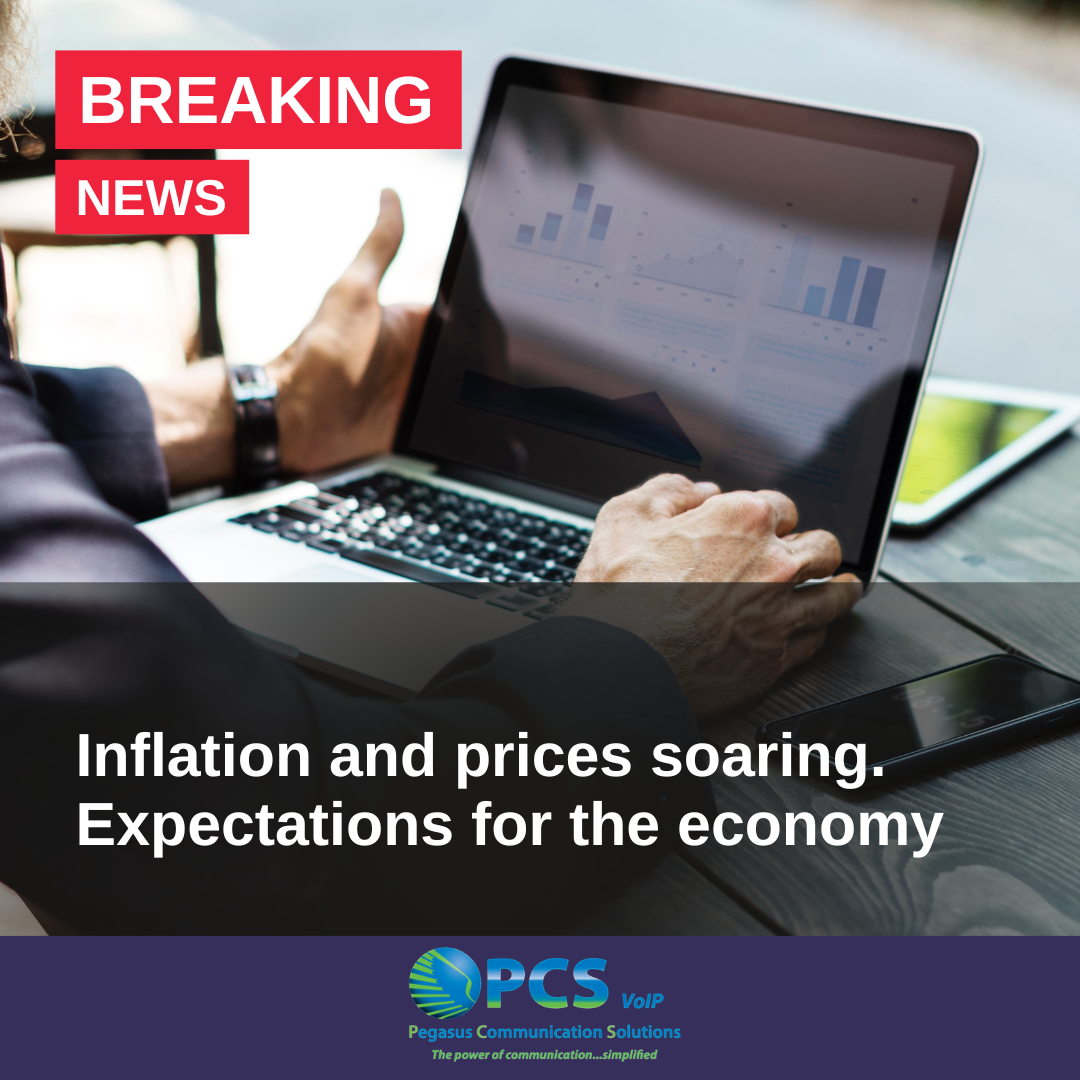
The aftershocks of the COVID-19 pandemic continue to rock the global economy. Following the shutdowns of 2020 and the supply chain challenges of 2021, another wave of disruptions is now breaking over businesses around the world: rising input prices.
Wherever you look, the prices of essential materials, products, and services are shooting up at rates unseen in a decade or more.
While other businesses are raising prices during this economic climate PCS VoIP is still providing quality service and products at the same low price. We understand the burden and hardship our clients are facing and PCS VoIP would like to counteract the financial increases by keeping our prices the same.
What’s in the driving seat?
Why are prices shooting up? Like most things that matter, there’s no simple answer. Rebounding demand is one obvious driver. After months of suppressed activity during the pandemic, businesses and consumers have been making up for lost time over the past year. Constrained supply is another. Plenty of industries acted fast to curtail production and cancel orders with suppliers early in the crisis. Other commentators worry that there is simply too much cash chasing too few goods and services. Government support measures have pushed money supply in major economies to an all-time high. In the United States, for example, the M2 measure of money supply grew by more than 27 percent in the year to February 2021, a record increase.
That uncertainty is creating extremely challenging conditions for organizations and exposing the limits of the two conventional responses to cost increases: pricing and procurement strategy. Pricing isn’t providing the answer, because even if contractual arrangements allow it, and customers are willing and able to pay more, those increases do not always cover all the additional input costs. The result is thinner margins, lower sales volumes, or both.
High costs can threaten the viability of entire businesses, squeezed by rising wholesale costs, insufficient or ineffective hedging strategies, and in some instances, regulatory pressures as well. And while governments have occasionally intervened to provide relief in sectors deemed critical, that option is not realistic for most companies.
Procurement departments, meanwhile, can do a lot in response to price rises, but there are limits to what they can achieve on their own. Conventional procurement approaches include the pursuit of economies of scale through volume purchasing agreements, or long-term contracts in which suppliers accept lower margins in return for demand security. In today’s conditions, the former approach carries less weight with suppliers that already face more demand than they can fulfil. And if high input costs are transient, the latter risks leaving the purchaser in an uncompetitive position when prices fall. In addition, continuing shortages of critical parts and materials are putting pressure on procurement functions to prioritize supply security over cost in the short to medium term.
Small business owners have had a few rough years. First, the Covid-19 pandemic caused many to lose revenue. Now, they’re dealing with higher costs as inflation rises. The consumer price index, which measures the prices of goods and services, increased 8.5% in March from a year ago, while the producer price index, which measures prices paid by wholesalers, jumped 11.2% year over year in March.
Inflation, as well as supply-chain issues and workforce challenges, are weighing heavily on businesses. Some 91% said these broader economic trends are having a negative impact on their business, according to a survey of 1,107 small business owners from Goldman Sachs 10,000 Small Businesses Voices. Fully 73% said increasing energy costs are having negative impacts on their bottom lines.
Some 75% said they are currently experiencing a rise in the cost of their supplies, yet only 40% are increasing prices. That’s down from the 47% of owners who adjusted prices in the first quarter.
Still, passing the cost on to consumers is the main tool small business owners are turning to, a separate survey by the National Federation of Independent Business found. They are also absorbing some of the higher costs. Some 31% are taking on debt. “Inflation is a new challenge for most small business owners that are currently operating,” said Holly Wade, executive director of the NFIB Research Center.
Small-business owners are also getting creative, looking for alternative solutions, such as reducing the quantity of goods and services offered to help stabilize costs, the survey found.
That can mean looking for efficiencies with ordering and networking as a way to find support and perhaps products and services at a reduced cost, she said. Their ability to be creative and innovative around their business and the business needs have actually set many of these businesses up for success, even with inflation as it is.”
We believe that companies can rethink their response to cost increases. They must go beyond conventional commercial levers and take a more holistic approach, one that addresses opportunities to control costs and to reduce the impact of volatility across the organization’s full spectrum of activities. That perspective will encompass far-reaching changes to the way products are designed and manufactured, as well as to the structure of the end-to-end value chain.
Business operations bear the brunt of cost increases because they are where the money is spent: on labor, energy, materials, and logistics services, for example. But operations also offer the opportunity to change a company’s exposure to those costs. And smart decisions on the way value chains are designed, built, and run can have a transformative impact on the organization’s cost base.
